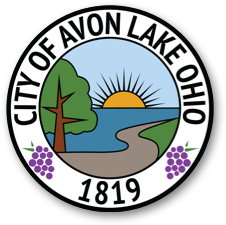Frequently Asked Questions
Q: Why are trees so important in urban areas?
In cities and towns, the trees, shrubs and associated plants found in public and private spaces make up what is called the urban forest. These are ever changing ecosystems that provide important benefits that improve our quality of life. The trees and shrubs filter air and water, help reduce storm water runoff, conserve energy by providing shade and blocking wind, and supply animal habitat. Importantly, they add beauty to our homes and parks and deliver psychological and spiritual support to our residents. Urban forests provide places to recreate, and they add economic value to our homes and communities. Source: Arbor Day Foundation
Q: Is mulch good for my trees and shrubs? How deep should the mulch be?
Mulch provides several benefits to newly planted and existing trees in your yard from weed reduction to soil moisture conservation to protecting the tree from weed eaters. It’s important to place only 2-4 inches of mulch around your tree avoiding contact of mulch with the tree trunk. For more details on mulching including types of mulch and application please follow this link from the International Source: Society of Aboriculture
Q: What is the best time of year to plant trees?
In Northeast Ohio, the best time to plant trees depends on the species and type of planting stock you are working with. In general, bare root seedlings or trees should be planted in the early spring so that the trees can take advantage of warming soil and spring rains to establish new roots. Balled and burlapped trees and container grown trees can be planted in spring or early fall as long as water can be provided in cases where rain is sparse. Some species of trees favor spring planting for reasons not entirely understood. Magnolia, tulip tree, fir, birch, American hornbeam, ginkgo, oak, bald cypress are examples of these. Planting time also depends on when you have time to care for the newly planted tree. New transplants may need frequent watering until new roots are established in one to two years. This could mean a good, soaking drench 2-3 times a week in very dry conditions. Care must be taken not to over water, too, because you can literally suffocate the tree roots resulting in rot and death.
Q: Who do I contact if I have problems with trees or shrubs on my property?
Many times, the nursery where you purchased your trees will be able to provide good advice on caring for issues that develop with your newly planted tree. However, once your tree is established and is getting larger, you need to talk to a certified arborist for advice on proper care including treatment of insects or diseases, pruning, and removal if needed. The International Society of Arborists provides certification for arborists that have attained significant training and maintain their expertise through continuing education. Another source to find an certified arborist is Trees Are Good.
Q: Do I need permission to plant or cut a tree on my tree lawn?
Tree lawns, the area between the sidewalk and the street, are prime areas for tree planting, but you do need to obtain a no-fee planting permit from the city to plant or have a tree installed in this zone. More Information
Q: What can I plant to replace the invasive Callery Pear varieties?
As of January 2023, it is illegal to sell or plant Bradford Pear, Cleveland Pear, or any of the invasive Callery Pear varieties in Ohio. Listed below are suggested replacements:
- Crabapple
- Kousa Dogwood
- Magnolia
- Serviceberry
- Hornbeam
- Redbud
- Cornelian Cherry
- Hydrangea tree
Bradford Pear produces excellent firewood that is dense, heavy, and clean burning once it's dry providing some benefit when the trees are removed.


